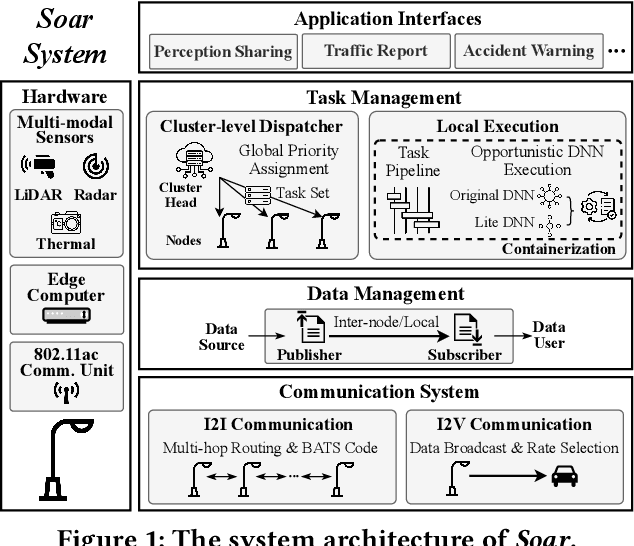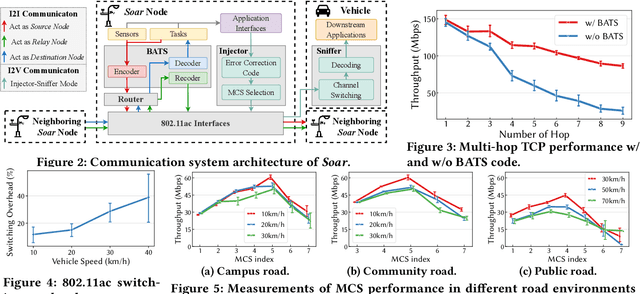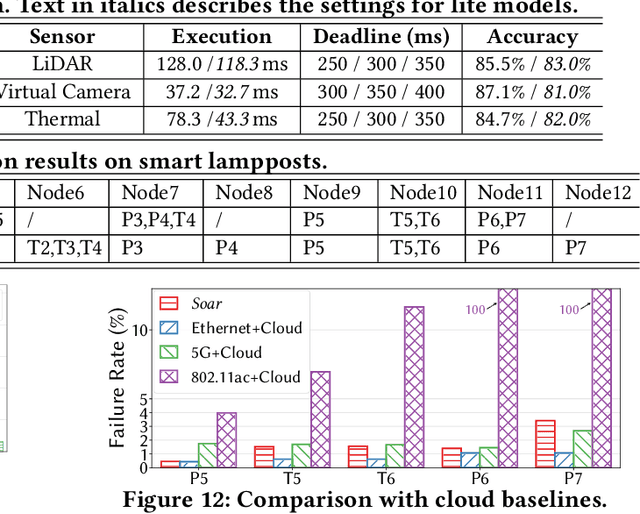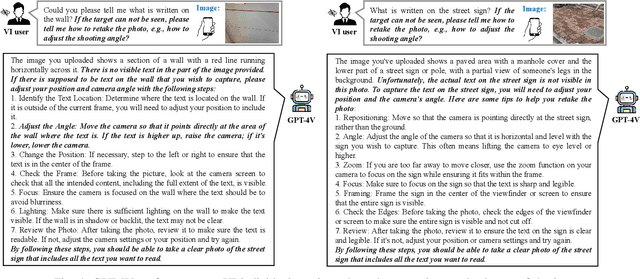Bufang Yang
DeepFeature: Iterative Context-aware Feature Generation for Wearable Biosignals
Dec 09, 2025Abstract:Biosignals collected from wearable devices are widely utilized in healthcare applications. Machine learning models used in these applications often rely on features extracted from biosignals due to their effectiveness, lower data dimensionality, and wide compatibility across various model architectures. However, existing feature extraction methods often lack task-specific contextual knowledge, struggle to identify optimal feature extraction settings in high-dimensional feature space, and are prone to code generation and automation errors. In this paper, we propose DeepFeature, the first LLM-empowered, context-aware feature generation framework for wearable biosignals. DeepFeature introduces a multi-source feature generation mechanism that integrates expert knowledge with task settings. It also employs an iterative feature refinement process that uses feature assessment-based feedback for feature re-selection. Additionally, DeepFeature utilizes a robust multi-layer filtering and verification approach for robust feature-to-code translation to ensure that the extraction functions run without crashing. Experimental evaluation results show that DeepFeature achieves an average AUROC improvement of 4.21-9.67% across eight diverse tasks compared to baseline methods. It outperforms state-of-the-art approaches on five tasks while maintaining comparable performance on the remaining tasks.
ContextAgent: Context-Aware Proactive LLM Agents with Open-World Sensory Perceptions
May 20, 2025Abstract:Recent advances in Large Language Models (LLMs) have propelled intelligent agents from reactive responses to proactive support. While promising, existing proactive agents either rely exclusively on observations from enclosed environments (e.g., desktop UIs) with direct LLM inference or employ rule-based proactive notifications, leading to suboptimal user intent understanding and limited functionality for proactive service. In this paper, we introduce ContextAgent, the first context-aware proactive agent that incorporates extensive sensory contexts to enhance the proactive capabilities of LLM agents. ContextAgent first extracts multi-dimensional contexts from massive sensory perceptions on wearables (e.g., video and audio) to understand user intentions. ContextAgent then leverages the sensory contexts and the persona contexts from historical data to predict the necessity for proactive services. When proactive assistance is needed, ContextAgent further automatically calls the necessary tools to assist users unobtrusively. To evaluate this new task, we curate ContextAgentBench, the first benchmark for evaluating context-aware proactive LLM agents, covering 1,000 samples across nine daily scenarios and twenty tools. Experiments on ContextAgentBench show that ContextAgent outperforms baselines by achieving up to 8.5% and 6.0% higher accuracy in proactive predictions and tool calling, respectively. We hope our research can inspire the development of more advanced, human-centric, proactive AI assistants.
An LLM-Empowered Low-Resolution Vision System for On-Device Human Behavior Understanding
May 03, 2025Abstract:The rapid advancements in Large Vision Language Models (LVLMs) offer the potential to surpass conventional labeling by generating richer, more detailed descriptions of on-device human behavior understanding (HBU) in low-resolution vision systems, such as depth, thermal, and infrared. However, existing large vision language model (LVLM) approaches are unable to understand low-resolution data well as they are primarily designed for high-resolution data, such as RGB images. A quick fixing approach is to caption a large amount of low-resolution data, but it requires a significant amount of labor-intensive annotation efforts. In this paper, we propose a novel, labor-saving system, Llambda, designed to support low-resolution HBU. The core idea is to leverage limited labeled data and a large amount of unlabeled data to guide LLMs in generating informative captions, which can be combined with raw data to effectively fine-tune LVLM models for understanding low-resolution videos in HBU. First, we propose a Contrastive-Oriented Data Labeler, which can capture behavior-relevant information from long, low-resolution videos and generate high-quality pseudo labels for unlabeled data via contrastive learning. Second, we propose a Physical-Knowledge Guided Captioner, which utilizes spatial and temporal consistency checks to mitigate errors in pseudo labels. Therefore, it can improve LLMs' understanding of sequential data and then generate high-quality video captions. Finally, to ensure on-device deployability, we employ LoRA-based efficient fine-tuning to adapt LVLMs for low-resolution data. We evaluate Llambda using a region-scale real-world testbed and three distinct low-resolution datasets, and the experiments show that Llambda outperforms several state-of-the-art LVLM systems up to $40.03\%$ on average Bert-Score.
SocialMind: LLM-based Proactive AR Social Assistive System with Human-like Perception for In-situ Live Interactions
Dec 05, 2024



Abstract:Social interactions are fundamental to human life. The recent emergence of large language models (LLMs)-based virtual assistants has demonstrated their potential to revolutionize human interactions and lifestyles. However, existing assistive systems mainly provide reactive services to individual users, rather than offering in-situ assistance during live social interactions with conversational partners. In this study, we introduce SocialMind, the first LLM-based proactive AR social assistive system that provides users with in-situ social assistance. SocialMind employs human-like perception leveraging multi-modal sensors to extract both verbal and nonverbal cues, social factors, and implicit personas, incorporating these social cues into LLM reasoning for social suggestion generation. Additionally, SocialMind employs a multi-tier collaborative generation strategy and proactive update mechanism to display social suggestions on Augmented Reality (AR) glasses, ensuring that suggestions are timely provided to users without disrupting the natural flow of conversation. Evaluations on three public datasets and a user study with 20 participants show that SocialMind achieves 38.3% higher engagement compared to baselines, and 95% of participants are willing to use SocialMind in their live social interactions.
DrHouse: An LLM-empowered Diagnostic Reasoning System through Harnessing Outcomes from Sensor Data and Expert Knowledge
May 21, 2024Abstract:Large language models (LLMs) have the potential to transform digital healthcare, as evidenced by recent advances in LLM-based virtual doctors. However, current approaches rely on patient's subjective descriptions of symptoms, causing increased misdiagnosis. Recognizing the value of daily data from smart devices, we introduce a novel LLM-based multi-turn consultation virtual doctor system, DrHouse, which incorporates three significant contributions: 1) It utilizes sensor data from smart devices in the diagnosis process, enhancing accuracy and reliability. 2) DrHouse leverages continuously updating medical databases such as Up-to-Date and PubMed to ensure our model remains at diagnostic standard's forefront. 3) DrHouse introduces a novel diagnostic algorithm that concurrently evaluates potential diseases and their likelihood, facilitating more nuanced and informed medical assessments. Through multi-turn interactions, DrHouse determines the next steps, such as accessing daily data from smart devices or requesting in-lab tests, and progressively refines its diagnoses. Evaluations on three public datasets and our self-collected datasets show that DrHouse can achieve up to an 18.8% increase in diagnosis accuracy over the state-of-the-art baselines. The results of a 32-participant user study show that 75% medical experts and 91.7% patients are willing to use DrHouse.
Soar: Design and Deployment of A Smart Roadside Infrastructure System for Autonomous Driving
Apr 21, 2024



Abstract:Recently,smart roadside infrastructure (SRI) has demonstrated the potential of achieving fully autonomous driving systems. To explore the potential of infrastructure-assisted autonomous driving, this paper presents the design and deployment of Soar, the first end-to-end SRI system specifically designed to support autonomous driving systems. Soar consists of both software and hardware components carefully designed to overcome various system and physical challenges. Soar can leverage the existing operational infrastructure like street lampposts for a lower barrier of adoption. Soar adopts a new communication architecture that comprises a bi-directional multi-hop I2I network and a downlink I2V broadcast service, which are designed based on off-the-shelf 802.11ac interfaces in an integrated manner. Soar also features a hierarchical DL task management framework to achieve desirable load balancing among nodes and enable them to collaborate efficiently to run multiple data-intensive autonomous driving applications. We deployed a total of 18 Soar nodes on existing lampposts on campus, which have been operational for over two years. Our real-world evaluation shows that Soar can support a diverse set of autonomous driving applications and achieve desirable real-time performance and high communication reliability. Our findings and experiences in this work offer key insights into the development and deployment of next-generation smart roadside infrastructure and autonomous driving systems.
VIAssist: Adapting Multi-modal Large Language Models for Users with Visual Impairments
Apr 03, 2024



Abstract:Individuals with visual impairments, encompassing both partial and total difficulties in visual perception, are referred to as visually impaired (VI) people. An estimated 2.2 billion individuals worldwide are affected by visual impairments. Recent advancements in multi-modal large language models (MLLMs) have showcased their extraordinary capabilities across various domains. It is desirable to help VI individuals with MLLMs' great capabilities of visual understanding and reasoning. However, it is challenging for VI people to use MLLMs due to the difficulties in capturing the desirable images to fulfill their daily requests. For example, the target object is not fully or partially placed in the image. This paper explores how to leverage MLLMs for VI individuals to provide visual-question answers. VIAssist can identify undesired images and provide detailed actions. Finally, VIAssist can provide reliable answers to users' queries based on the images. Our results show that VIAssist provides +0.21 and +0.31 higher BERTScore and ROUGE scores than the baseline, respectively.
EdgeFM: Leveraging Foundation Model for Open-set Learning on the Edge
Nov 23, 2023



Abstract:Deep Learning (DL) models have been widely deployed on IoT devices with the help of advancements in DL algorithms and chips. However, the limited resources of edge devices make these on-device DL models hard to be generalizable to diverse environments and tasks. Although the recently emerged foundation models (FMs) show impressive generalization power, how to effectively leverage the rich knowledge of FMs on resource-limited edge devices is still not explored. In this paper, we propose EdgeFM, a novel edge-cloud cooperative system with open-set recognition capability. EdgeFM selectively uploads unlabeled data to query the FM on the cloud and customizes the specific knowledge and architectures for edge models. Meanwhile, EdgeFM conducts dynamic model switching at run-time taking into account both data uncertainty and dynamic network variations, which ensures the accuracy always close to the original FM. We implement EdgeFM using two FMs on two edge platforms. We evaluate EdgeFM on three public datasets and two self-collected datasets. Results show that EdgeFM can reduce the end-to-end latency up to 3.2x and achieve 34.3% accuracy increase compared with the baseline.
BrainZ-BP: A Non-invasive Cuff-less Blood Pressure Estimation Approach Leveraging Brain Bio-impedance and Electrocardiogram
Nov 23, 2023



Abstract:Accurate and continuous blood pressure (BP) monitoring is essential to the early prevention of cardiovascular diseases. Non-invasive and cuff-less BP estimation algorithm has gained much attention in recent years. Previous studies have demonstrated that brain bio-impedance (BIOZ) is a promising technique for non-invasive intracranial pressure (ICP) monitoring. Clinically, treatment for patients with traumatic brain injuries (TBI) requires monitoring the ICP and BP of patients simultaneously. Estimating BP by brain BIOZ directly can reduce the number of sensors attached to the patients, thus improving their comfort. To address the issues, in this study, we explore the feasibility of leveraging brain BIOZ for BP estimation and propose a novel cuff-less BP estimation approach called BrainZ-BP. Two electrodes are placed on the forehead and occipital bone of the head in the anterior-posterior direction for brain BIOZ measurement. Various features including pulse transit time and morphological features of brain BIOZ are extracted and fed into four regression models for BP estimation. Results show that the mean absolute error, root mean square error, and correlation coefficient of random forest regression model are 2.17 mmHg, 3.91 mmHg, and 0.90 for systolic pressure estimation, and are 1.71 mmHg, 3.02 mmHg, and 0.89 for diastolic pressure estimation. The presented BrainZ-BP can be applied in the brain BIOZ-based ICP monitoring scenario to monitor BP simultaneously.
 Add to Chrome
Add to Chrome Add to Firefox
Add to Firefox Add to Edge
Add to Edge